Atomic Layer Deposition (ALD)
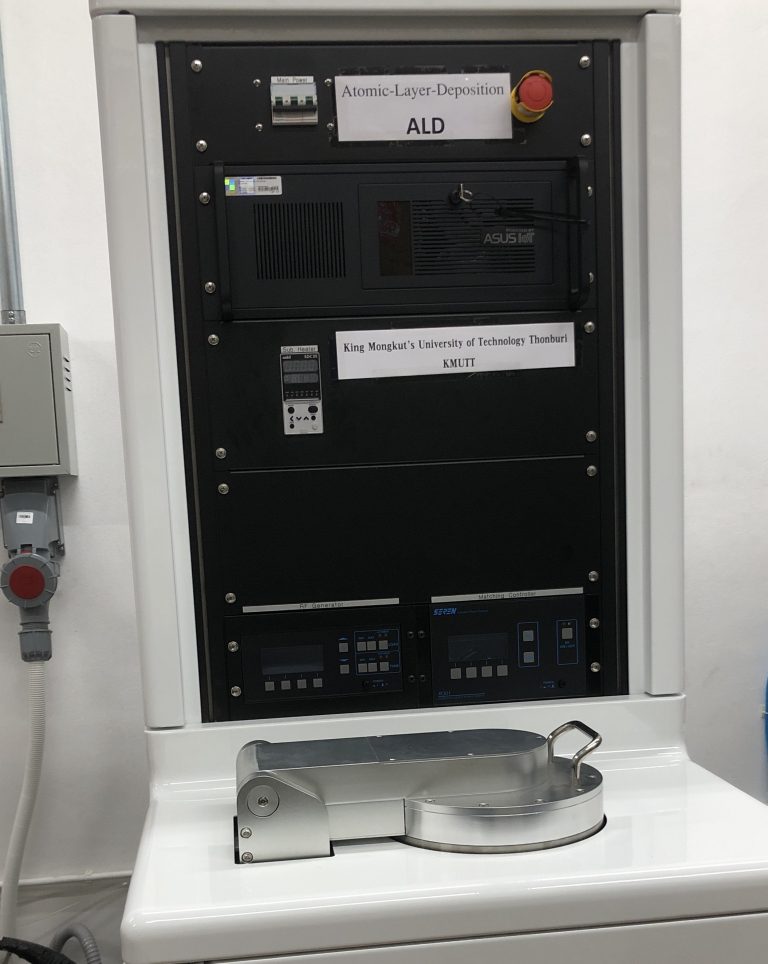
Atomic Layer Deposition (ALD) is a thin film deposition technique that can be used for encapsulation in perovskite solar cells to improve their stability and performance. The process involves the sequential introduction of precursors that react with the surface of the material to form a thin film.
X-Ray Diffraction (XRD)
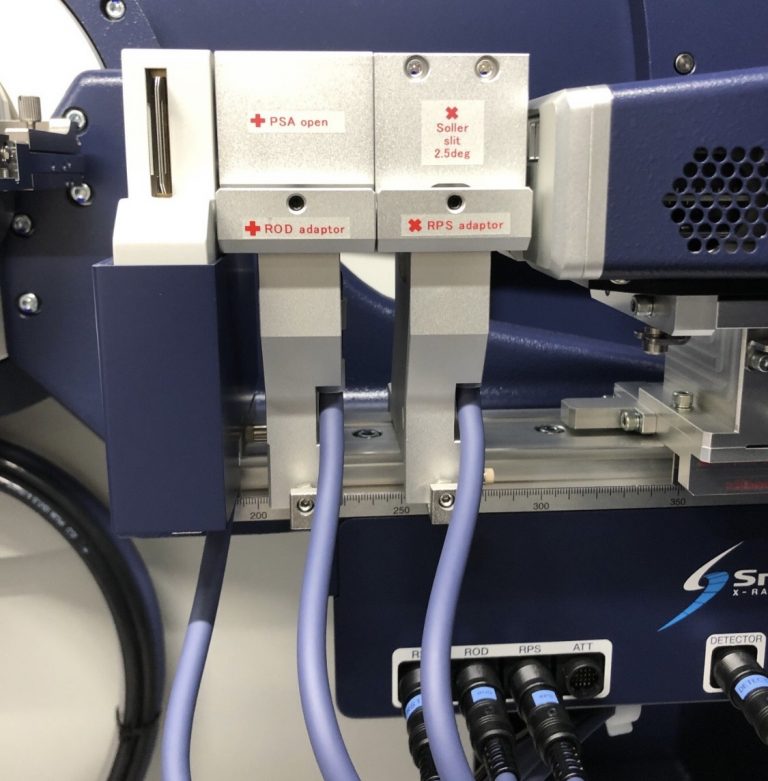
XRD is a fundamental tool in the analysis and understanding of crystalline materials. Its ability to provide detailed information about crystal structures and phases makes it invaluable in both research and industrial applications.
RF-DC sputtering system
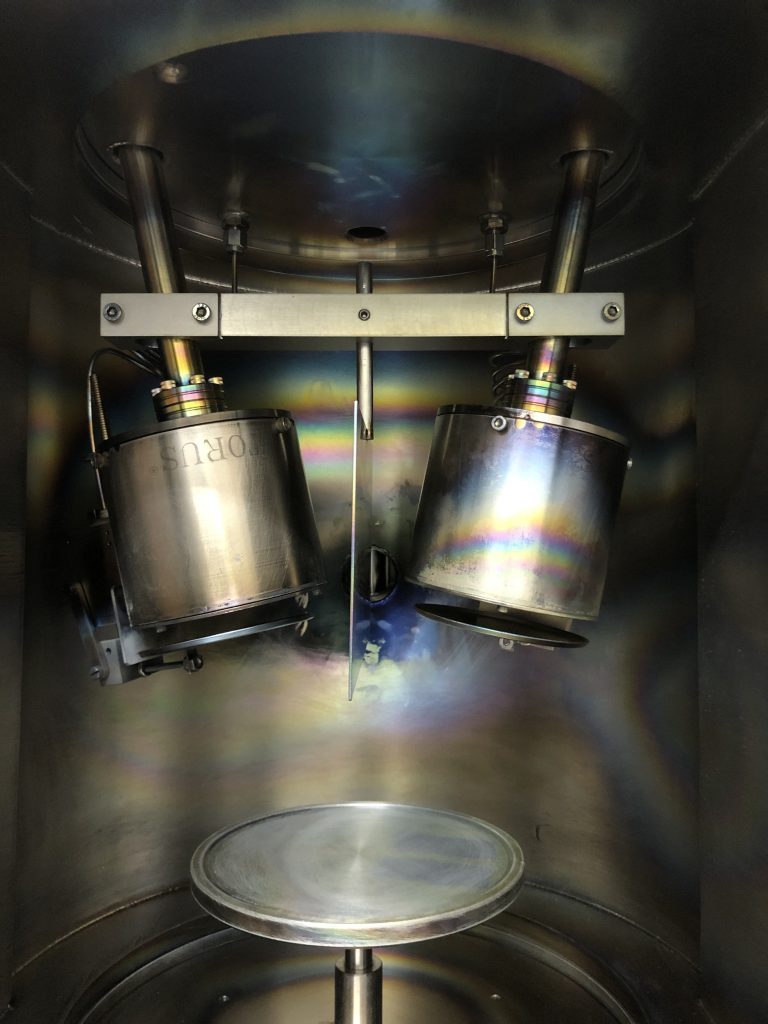
Sputtering relies on a physical process where any particles of interest are ejected from a solid target material; this is due to the bombardment of the target by energetic gases. We use the RF&DC sputtering system for preparation of different layers of metal and semiconducting as well as composite materials. The advanced energy MDX 1.5K and RFX 600 equipped with ATX matching network are used as DC and RF power sources, respectively. A rotating substrate holder is installed in the system for uniformity of the deposited films.
Surface Photovoltage Spectroscopy (SPV)

We use the surface photovoltage spectroscopy (SPV) in a capacitive arrangement to study the photo-induced charge separation and charge transport of materials of interest. SPV spectra provide information regarding type of semiconductor, on-set energy, direction of charge separation, and defect state below the band gap. Additionally, the SPV system comes along with a temperate-controlled unit that allows us to perform an in-situ heating measurements.
Atomic Force Microscope (AFM)
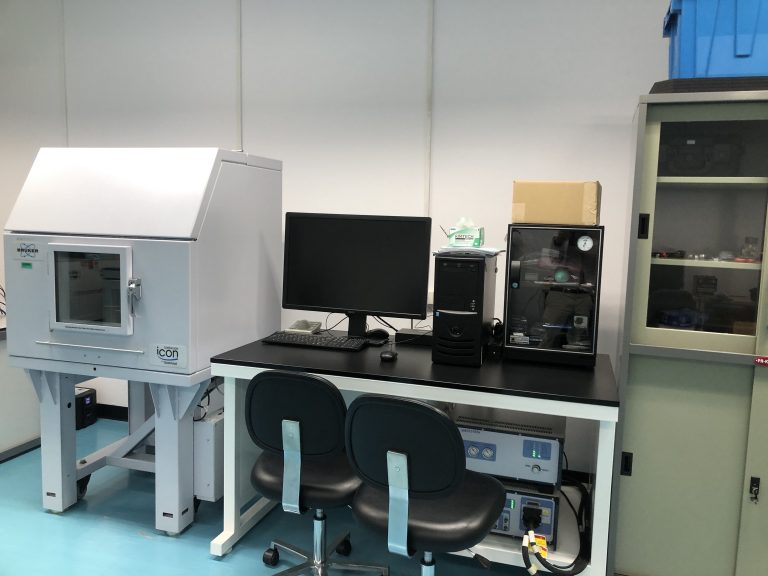
Atomic Force Microscopy (AFM) is a type of scanning probe microscopy that provides a three-dimensional surface profile of a sample. AFM can provide high-resolution images at the nanometer scale and can be used to measure various properties such as topography, roughness, mechanical properties, and electrical properties.
Electron-Beam Deposition (E-beam)
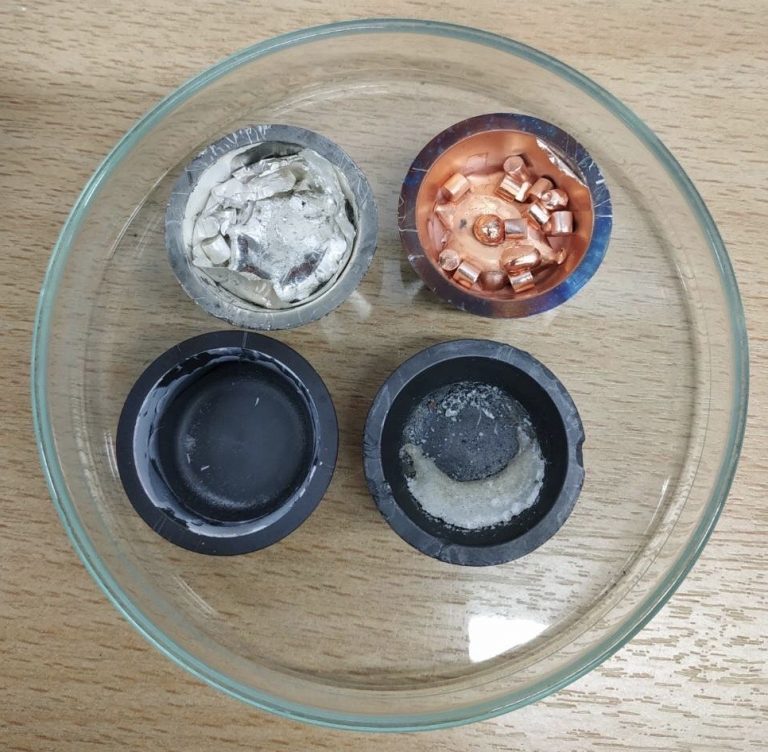
E-beam (electron beam) deposition is a process used in the fabrication of thin films, including those for perovskite solar cells. For perovskite solar cells, materials like TiO2 or SnO2 or NiOx are commonly used for this purpose. The ETL/ HTL can be deposited using E-beam evaporation, ensuring a thin, uniform layer.
Thermal Evaporator
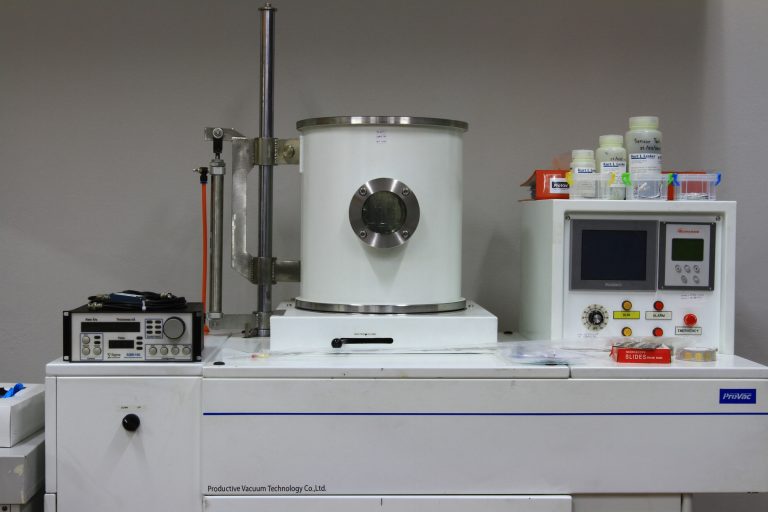
Using a thermal evaporator to make electrodes for solar cells involves a process of heating a material in a vacuum to its evaporation point, where it then condenses onto a substrate to form a thin film. This method is particularly useful for depositing metallic electrodes, which are crucial components in solar cells.
Nitrogen-Purged Glovebox
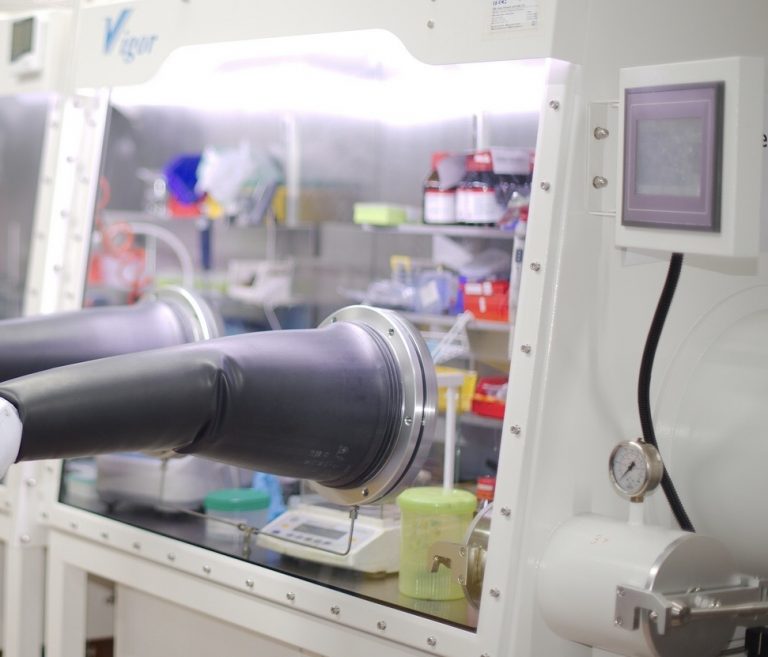
The use of a nitrogen-purged glove box is vital in the fabrication of perovskite solar cells due to the sensitive nature of the perovskite materials to environmental factors like moisture and oxygen. This controlled environment is key to achieving high-efficiency, stable, and reproducible solar cells.
External Quantum Efficiency (EQE)
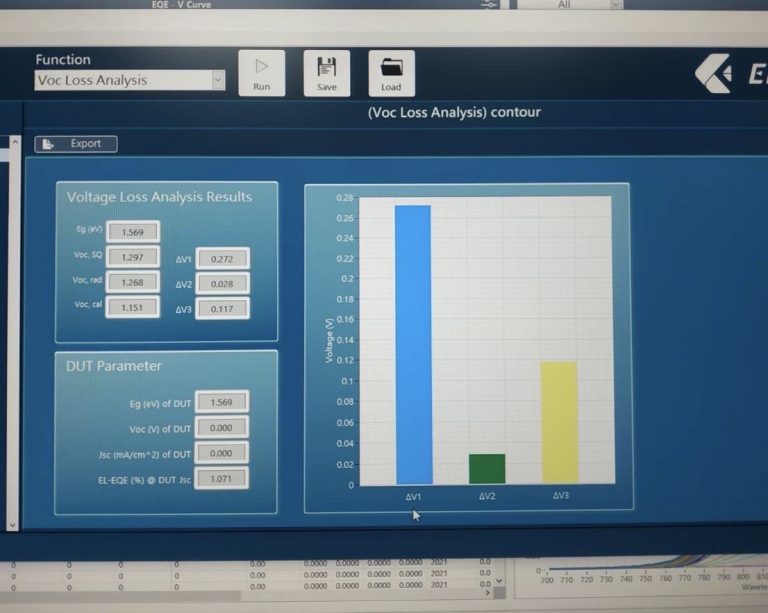
The External Quantum Efficiency (EQE) is an important parameter in the development of perovskite solar cells, as it provides critical insights into the efficiency and performance of these cells. EQE measures the fraction of incident photons that are converted into electrons, and it’s defined for each wavelength of the incident light.
Sun Simulator
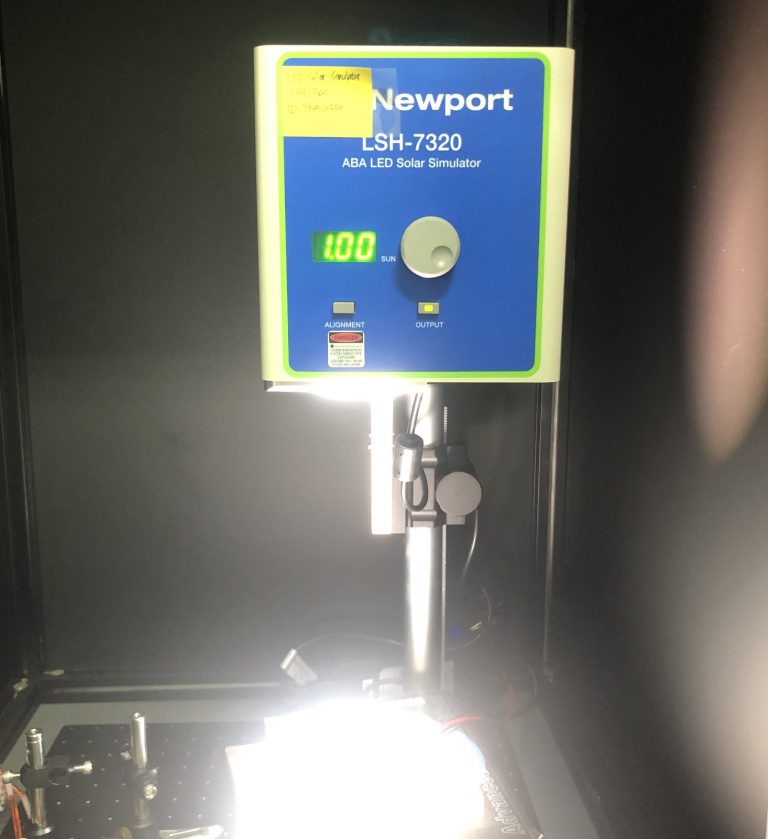
Solar simulators provide a standardized environment to test solar cells. They produce light with a spectrum and intensity that closely match those of the sun, ensuring that the performance of solar cells is measured under consistent and comparable conditions. Solar simulators can be used to test the long-term stability and durability of solar cells by exposing them to continuous, controlled light. This helps in understanding how solar cells degrade over time and under different conditions, which is critical for improving their lifespan and performance.
Low-Temp Electrical Measurement
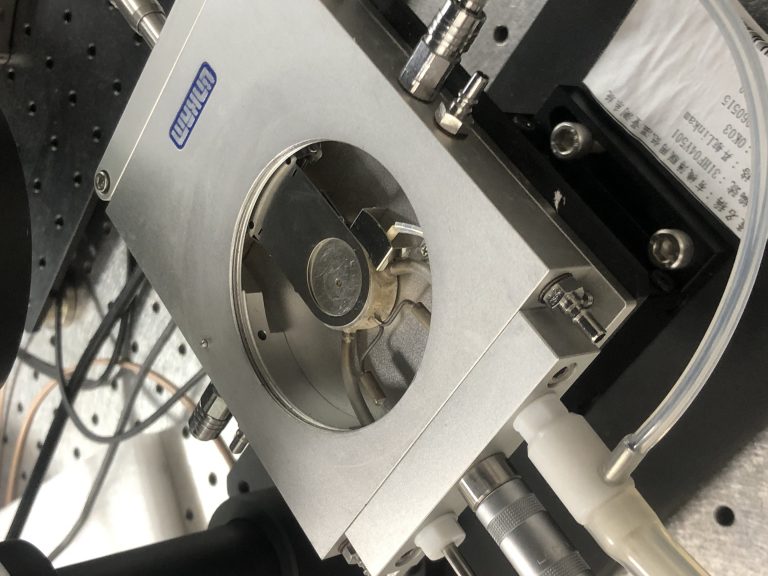
Low-temperature electrical measurements are vital for a deeper understanding of the fundamental properties and behaviors of semiconductors. They provide insights into quantum phenomena, carrier dynamics, material defects, and device performance that are essential for the development and optimization of semiconductor technologies.
Photo-luminescence (PL) setup
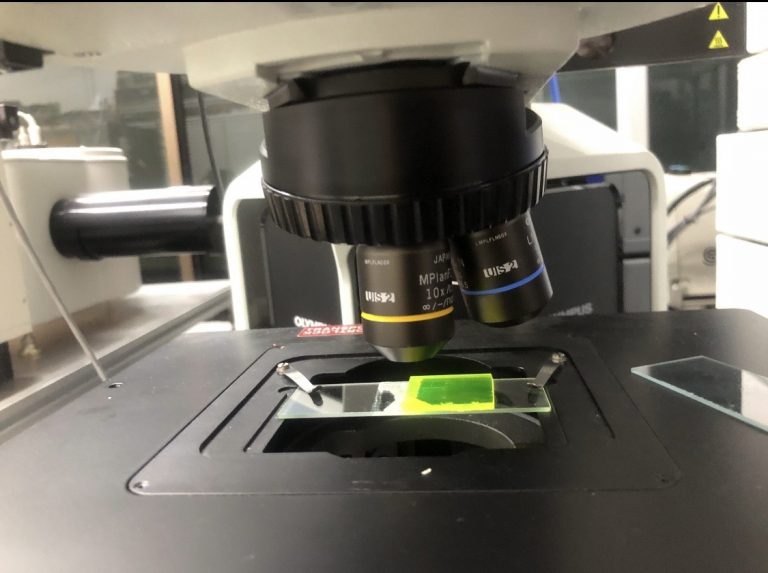
Photoluminescence (PL) measurement is a key technique in perovskite research due to its ability to provide valuable information about the optical and electronic properties of perovskite materials. PL is sensitive to defects, impurities, and non-radiative recombination sites within the perovskite material. These defects can act as traps for charge carriers, reducing the efficiency of solar cells. By studying the PL spectrum, we can identify and quantify these defects, guiding improvements in material synthesis and processing.
Time-Resolved PL setup
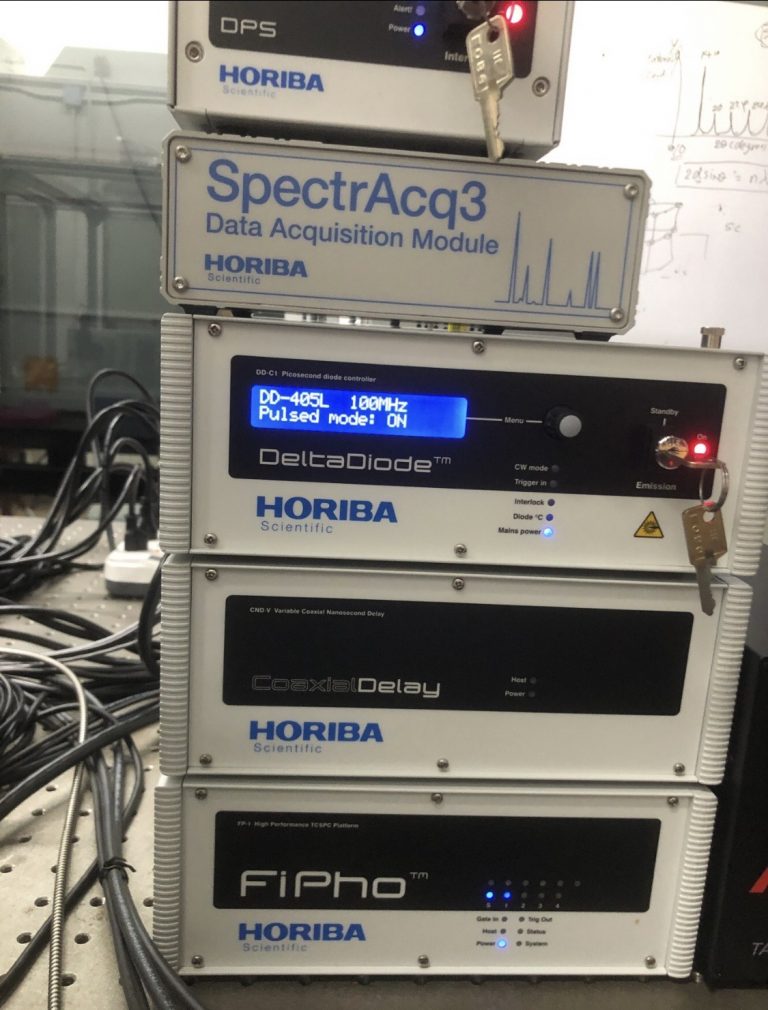
The measurement of photoluminescence (PL) lifetime is crucial in perovskite research as it provides essential insights into the dynamics of charge carriers within perovskite materials. PL lifetime measurements reveal information about the behavior of charge carriers in perovskite materials, including their recombination rates and mechanisms. Longer lifetimes generally indicate slower recombination rates, which can lead to more efficient charge collection in solar cells. Monitoring changes in PL lifetime over time can provide insights into the stability and degradation mechanisms of perovskite materials under various environmental conditions, such as exposure to light, heat, and humidity.
Mechanical Bending Test
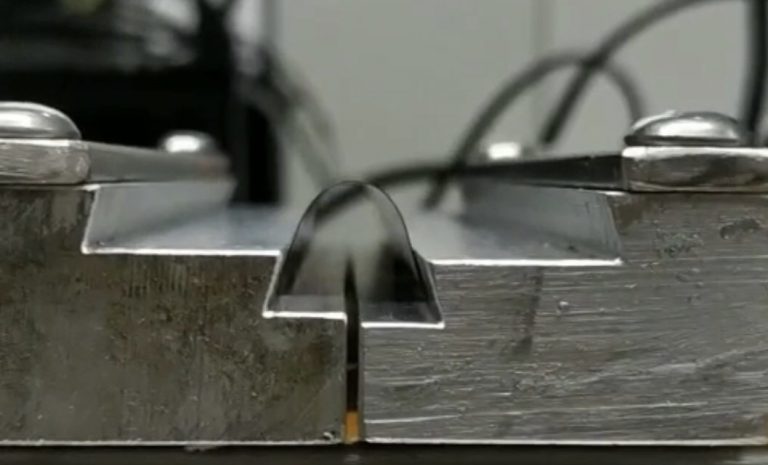
The bending test is a critical evaluation method for flexible solar cells, as it assesses their mechanical robustness and durability under real-world conditions where bending and flexing are expected. Flexible solar cells are designed to be used in applications where traditional rigid solar panels are impractical, such as on curved surfaces, wearable electronics, or portable devices.